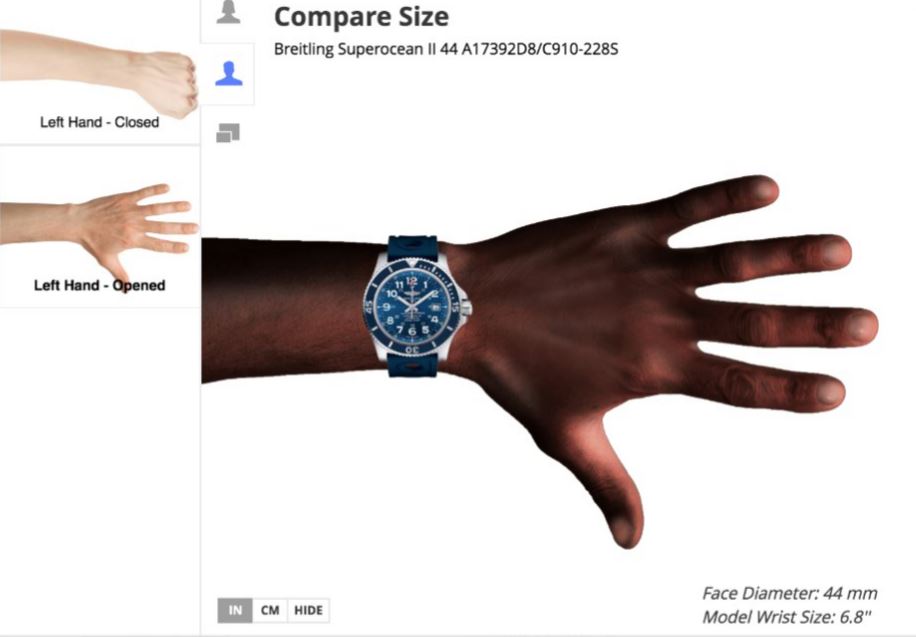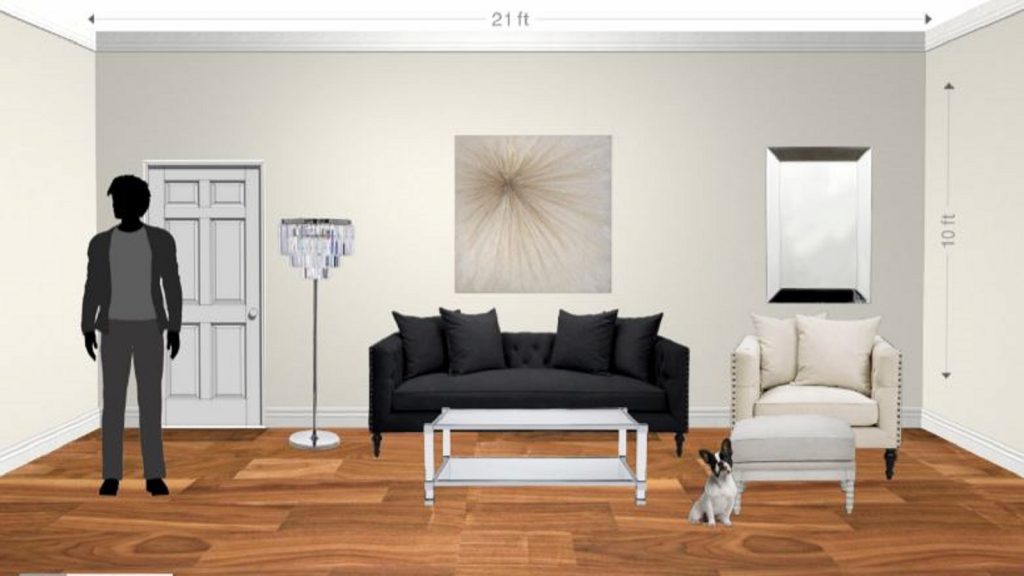Step inside Tangiblee’s digital fitting rooms
Sharon whispered a birthday hint – diamond earrings. Her husband heard it, smiled and grabbed his phone. Eliad Inbar soon found, he thought, the perfect pair – small and elegant, just like Sharon.
The set barely arrived in time, a day before Sharon’s birthday. But when Inbar, 39, opened the box, he winced. The earrings were seven times larger than he intended. They had to go back.
He felt a pang of panic known to husbands everywhere then dashed to the store to buy a replacement gift.
“That kind of thing happens a lot with online shoppers. And it happens with all kinds of merchandise,” Inbar says. “There is a problem here. There is a gap. That’s what inspired us.”
Based on that bumpy experience and similar digital shopping fails, Inbar and his business partner, Yevgeniy Kuznetsov, co-founded Tangiblee. Their service, which lives on the websites of their retail partners, lets consumers see on their devices how jewelry, handbags, luggage, furniture and other products will fit their bodies or their homes.

Tangiblee uses existing images and content on retailers’ online catalogues to transform their product pages into digital fitting rooms.
When shoppers visit participating jewelers’ sites, for example, they can pick the skin tone, body type and part (wrist, finger, ear or neck) to gauge how a trinket will look on them. Consumers also can view watches, rings, bracelets and pendants in scale next to a penny, earbud or ruler.
“Not everybody is 5-foot-11 with blonde hair and blue eyes. Everybody is different,” Inbar says. “You want to see how these items look in terms of your own physical context. This is for people, not for models.”
Users can apply that same personalized lens to far larger merchandise. On home furnishing sites, Tangiblee transforms product pages into virtual room planners to show how sofas, tables, art or lighting match the precise dimensions of a shopper’s rooms.
The company used an array of Microsoft tools, including Azure SQL Database and Office 365, to build a cloud-based, scalable solution that’s used by more than 50 retailers, including Z Gallerie, Shane Co., Rebecca Minkoff and Samsonite. Across those websites, Tangiblee serves 40 million-plus visits per month, Inbar says.

“We try to help a client’s consumer in the critical point of decision – where they examine the product and ask themselves: Will it fit?” Inbar says. “And ‘fit’ is a broad word. It’s not just for clothing. ‘Fit’ works for many categories. Like, does it work with my sofa?
“It’s a lot about confidence. We just help them get more confident about their decision.”
At ZGallerie.com, shoppers evaluating, say, the Stella Love Seat, can click on “compare size” to bring up a window that lets them see that chair in a virtual room. They can control the room’s dimensions, adding a male or female adult of varying heights along with other pieces of furniture, a flat-screen TV, a floor lamp, wall art, a door – even a French bulldog.
For years, selling furniture online has been fraught with challenges, including those tricky questions about size and fit that tend to slow or stop browsers from actually clicking to purchase – also known as the conversion rate.
On top of that, home furnishings tend to be high-ticket items that make shoppers think even harder about making that buy.
“You want tools that make you sure as a shopper. Tangiblee offers a bit of hand-holding for high-value customers,” says Kristen Gall, Z Gallerie vice president of e-commerce. “It helps them figure out: Does it sort of look like it’s right for me, or is it really right for me?”
“For the home furnishing market, this makes so much sense. I mean, it kills it,” Gall adds.
About 25 percent of visitors to ZGallerie.com click into the Tangiblee tool. For those who do, the conversion rate on purchases is about 30 to 40 percent higher compared to customers who don’t use the sizing service, Gall says.
Rebecca Minkoff, meanwhile, reports that among its online customers who interact with Tangiblee, the conversation rate on handbag purchases is four times higher when compared to shoppers who bypass the tool.
And consumers are making many of those buys on their mobile phones, user metrics show. Some 60 percent of the Tangiblee users on ZGallerie.com are viewing via mobile devices, Gall says.
“That has penetrated a bit heavier than our typical mobile traffic, so the usage is definitely skewed heavily toward mobile,” Gall says. “And I want to do everything I can to foster mobile conversion. No question, that’s huge.”
The co-founders built Tangiblee with an eye toward providing a consistent user experience across desktops, laptops and mobile devices, Inbar says.
To get there, they relied on Microsoft’s open-source, app-building framework ASP.NET as well as ASP.NET MVC, which helps developers build websites. Tangiblee derives its cloud power by running most of its servers on Microsoft Azure, says co-founder Kuznetsov, who also serves as the company’s chief technology officer.

“Azure is very much at the core of our business,” Kuznetsov says. “We look at Azure as a collection of technology building blocks and we always prefer to use ready-made blocks and solutions instead of developing ones.”
Kuznetsov, 38, lives and works in Israel, near Tel-Aviv. Inbar also is from Israel. About five years ago, the pair accepted an invitation to Techstars Chicago, an accelerator program that’s been a boon to members of the startup community.
The experience taught both men to think beyond the coding and the build to better understand the psychology of U.S. consumers, Inbar says. In fact, Inbar and Sharon decided to move to Chicago in 2014.
In America, Inbar has found, shoppers and marketers take more of a 360-degree view of the buying experience – they absorb those interactions through the lens of brand perception and, of course, through the purchase itself. Later, they think about the after-effects of their purchase, including whether they want to come back, he adds.
“’Immersive’ is a great word for that. As two engineers from Israel, we are very oriented at offering better value. Like, I can make it run faster,” Inbar says. “But people don’t buy technology. They buy solutions to solve their problems. That’s something we learned very fast. That’s how we developed the product.
“For example, Sharon doesn’t like tech. She likes shopping. She even had a fashion blog. But technology is not her major interest. Technology works best when people don’t even know that it exists. But, of course, it is part of the magical experience.”
Top image: A screenshot of the Tangiblee tool in use on the Z Gallerie website








